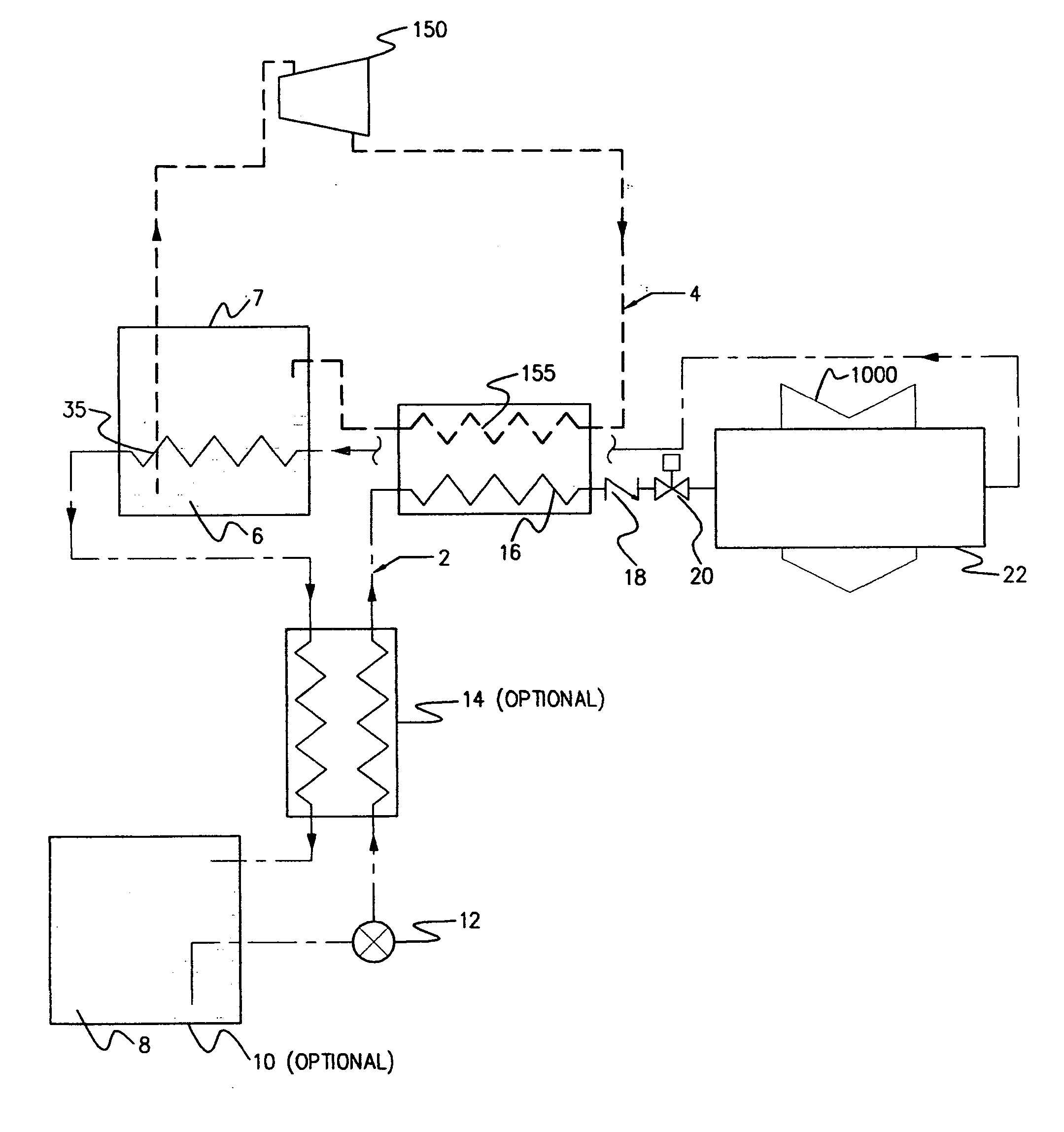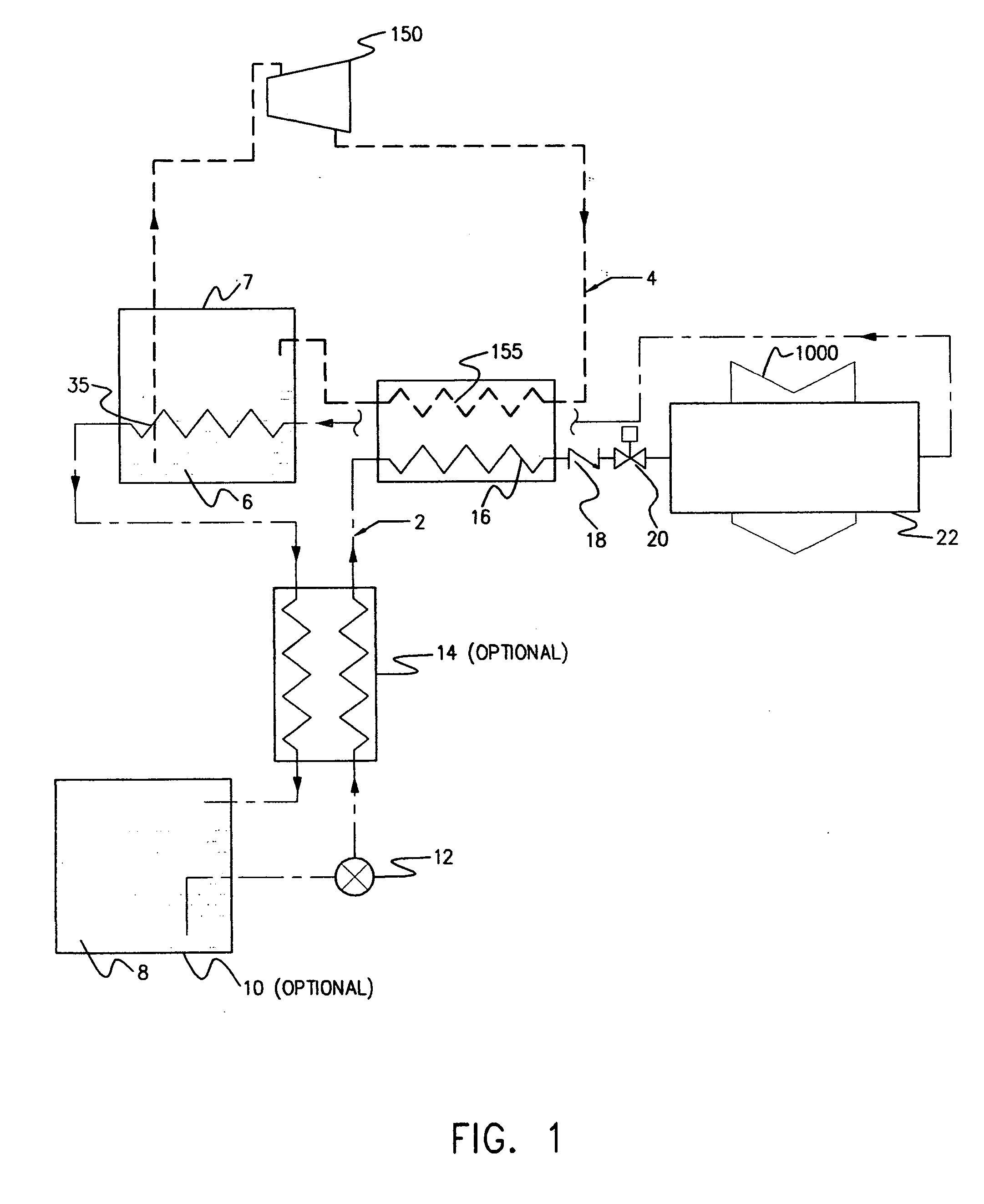Cryogenic cogeneration system
a cogeneration system and cryogenic technology, applied in the direction of mechanical power devices, mechanical equipment, machines/engines, etc., can solve the problems of hydroelectricity production, significant negative impact on the environment, and inconvenient operation,
- Summary
- Abstract
- Description
- Claims
- Application Information
AI Technical Summary
Benefits of technology
Problems solved by technology
Method used
Image
Examples
Embodiment Construction
[0034] Reference will now be made in detail to the present preferred embodiments of the invention as illustrated in the accompanying drawings.
[0035] The cryogenic and thermal source cogeneration system of the present invention includes both method and apparatus including an array of heat exchanger(s), flow regulation device(s), compression system(s) and expansion engines that are assembled to integrate synchronized thermodynamic and non thermodynamic processes for the extraction of heat from geo-thermal (natural internal heat sources below the surface of the earth) or solar-thermal (natural heat sources above the Earth's surface) energy sources and for the conversion of this thermal energy (heat) into mechanical energy. This system may be utilized primarily to drive generators for the production of electricity but other applications include benefits from the net mechanical work produced by this system. This system also has many cogeneration applications that can be utilized as an a...
PUM
 Login to View More
Login to View More Abstract
Description
Claims
Application Information
 Login to View More
Login to View More - R&D
- Intellectual Property
- Life Sciences
- Materials
- Tech Scout
- Unparalleled Data Quality
- Higher Quality Content
- 60% Fewer Hallucinations
Browse by: Latest US Patents, China's latest patents, Technical Efficacy Thesaurus, Application Domain, Technology Topic, Popular Technical Reports.
© 2025 PatSnap. All rights reserved.Legal|Privacy policy|Modern Slavery Act Transparency Statement|Sitemap|About US| Contact US: help@patsnap.com



